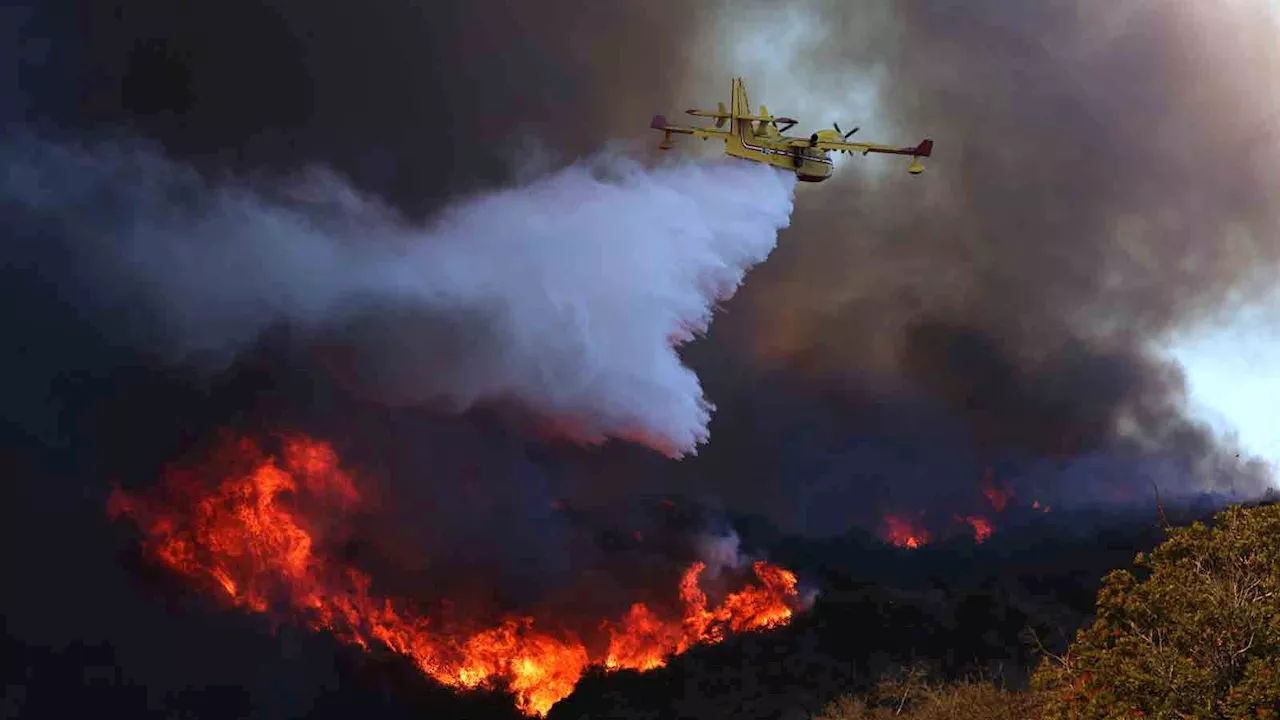Wildfires raging in California have been exacerbated by high winds, which have grounded aerial firefighting efforts. Planes dropping water and retardant are unable to fly safely in these conditions. The text explains the different types of aircraft used in firefighting and the challenges posed by strong winds.
Aerial support during the California wildfires has been grounded at times by high winds. The rapid spread of multiple fires, which have killed at least 24 people and displaced thousands, is partly attributed to these gusts. Planes tasked with dropping water and retardant on impacted areas have been unable to fly in certain conditions due to the dangers posed by the winds.
The California National Guard shared video of pilots dropping fire retardant over the Palisades Fire using a Modular Airborne FireFighting System-equipped C-130J aircraft. Sustained winds over 40 miles per hour and high-velocity gusts impact a plane's ability to safely approach and depart a targeted area, while also impacting its water and retardant drop accuracy. A member of the California Department of Forestry and Fire Protection told reporters Monday, 'So, each aircraft will have that limitation based on the manufacturer's recommendation, and then as far as the safety component, usually the limiting factor is gusts over 30 miles an hour. But the sustained winds, anything over 40 is pretty much going to ground most aircrafts.' The National Weather Service issued a rare warning about a 'particularly dangerous situation' related to severe fire conditions beginning overnight Monday into Tuesday. Cal Fire operates the largest civil aerial firefighting fleet in the world, with a fleet of more than 60 aircraft operating from 14 airfields and 11 helicopter bases across the state. Tactical planes, primarily North American Rockwell OV-10 aircraft, monitor fires and serve as the primary aerial communication between other aircraft and commanders on the ground. Helicopters, like the Bell UH-1H Super Huey, carry a bucket below the aircraft that contains about 320 gallons of water to be dumped on the flames. The Sikorsky S70i Hawk has a fixed tank containing 1,000 gallons of water or foam with pilot-controlled drop volumes. Airtankers, specifically the Grumman S-2T tanker used for fast initial attacks on fires, hold roughly 1,200 gallons of retardant that can be dropped on the perimeter of the blaze. These tankers loop from the fire to the air base, where aircraft like the S-2T tanker can be refilled on the ground within minutes. Cal Fire also has seven new airtankers, the C-130 Hercules, which each hold 4,000 gallons of fire retardant. Cal Fire can also employ contractors to bring in Large Air Tankers (LATs) and Very Large Air Tankers (VLATs), which are typically passenger jets converted to tankers with external water tanks. Super Scooper planes load their tanks by skimming the surface of open bodies of water. After the water is dropped above the flames, the aircraft returns to the body of water to replenish their tank and repeats the process until fuel is needed. According to Cal Fire, fire retardant is 88% water and 12% ammonium phosphate, the fire-retardant component that is commonly found in fertilizers. Other ingredients include gum thickeners to help retardant stick to vegetation, flow conditioner to allow for easier transfer and mixing, and red coloring to help pilots see the fire retardant from the sky. Fire retardant is not considered hazardous for potential respiratory side effects, according to Cal Fire. It may cause skin irritation due to the ammonium but typically can be removed with soap and water. For domestic or farm animals, there are no known adverse side effects, but reactions may vary. Cal Fire advises pet owners whose animals eat significant amounts of vegetation that may be coated with fire retardant to consult a veterinarian
CALIFORNIA WILDFIRES AERIAL FIREFIGHTING HIGH WINDS FIRE RETARDANT AIRCRAFT CAL FIRE
United States Latest News, United States Headlines
Similar News:You can also read news stories similar to this one that we have collected from other news sources.
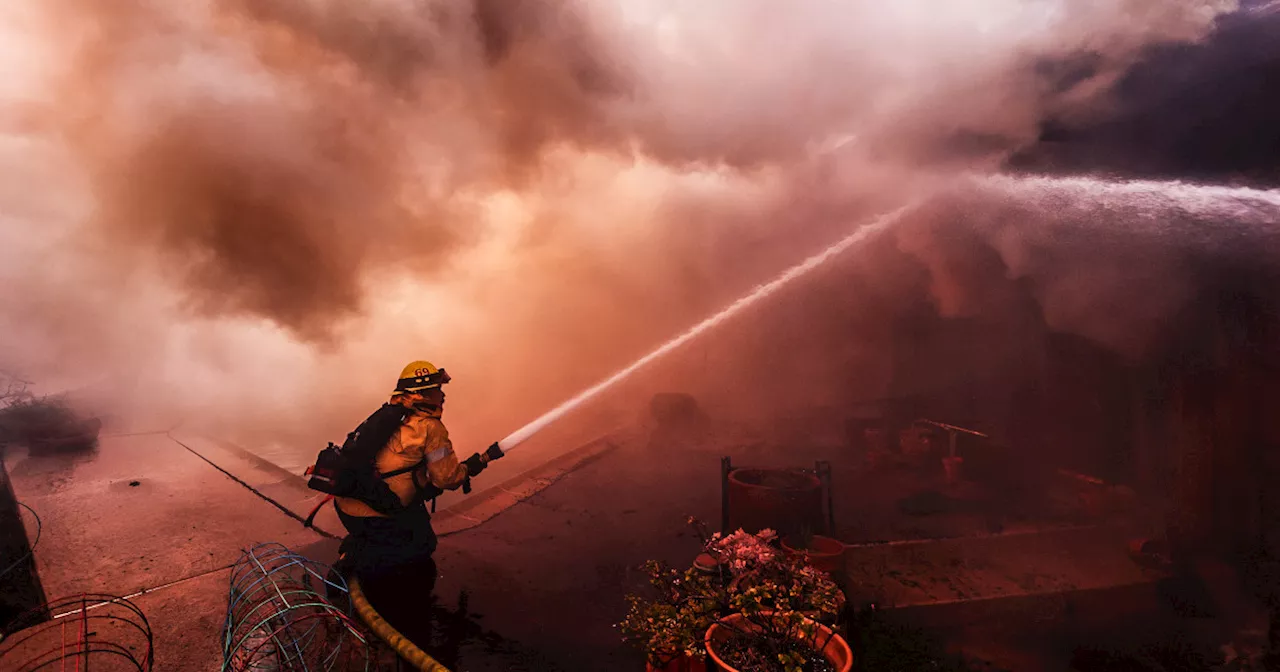 Multiple Wildfires Rage in Southern California Fueled by High WindsSeveral wildfires are burning in Southern California, fueled by strong winds and posing a significant threat to communities. The Palisades Fire in Los Angeles County has burned nearly 3,000 acres, prompting evacuations and drawing a federal response.
Multiple Wildfires Rage in Southern California Fueled by High WindsSeveral wildfires are burning in Southern California, fueled by strong winds and posing a significant threat to communities. The Palisades Fire in Los Angeles County has burned nearly 3,000 acres, prompting evacuations and drawing a federal response.
Read more »
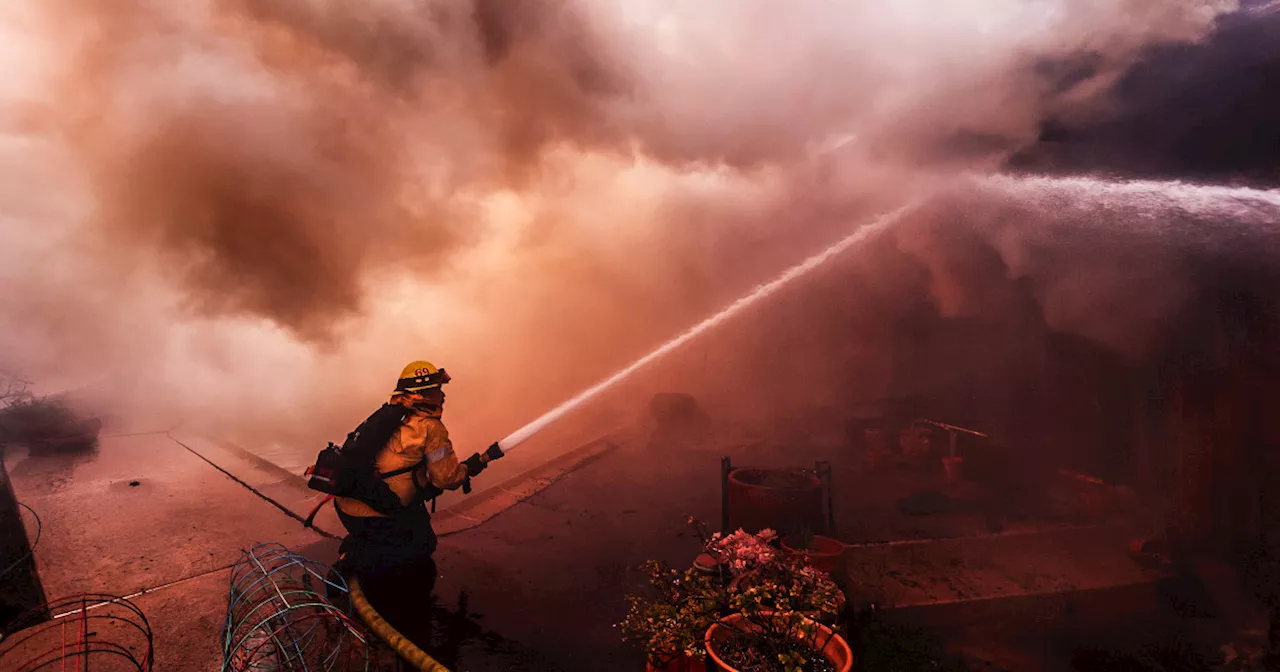 Wildfires, High Winds Cause Chaos in Southern CaliforniaMultiple wildfires fueled by strong Santa Ana winds are raging in Southern California, forcing evacuations and disrupting transportation.
Wildfires, High Winds Cause Chaos in Southern CaliforniaMultiple wildfires fueled by strong Santa Ana winds are raging in Southern California, forcing evacuations and disrupting transportation.
Read more »
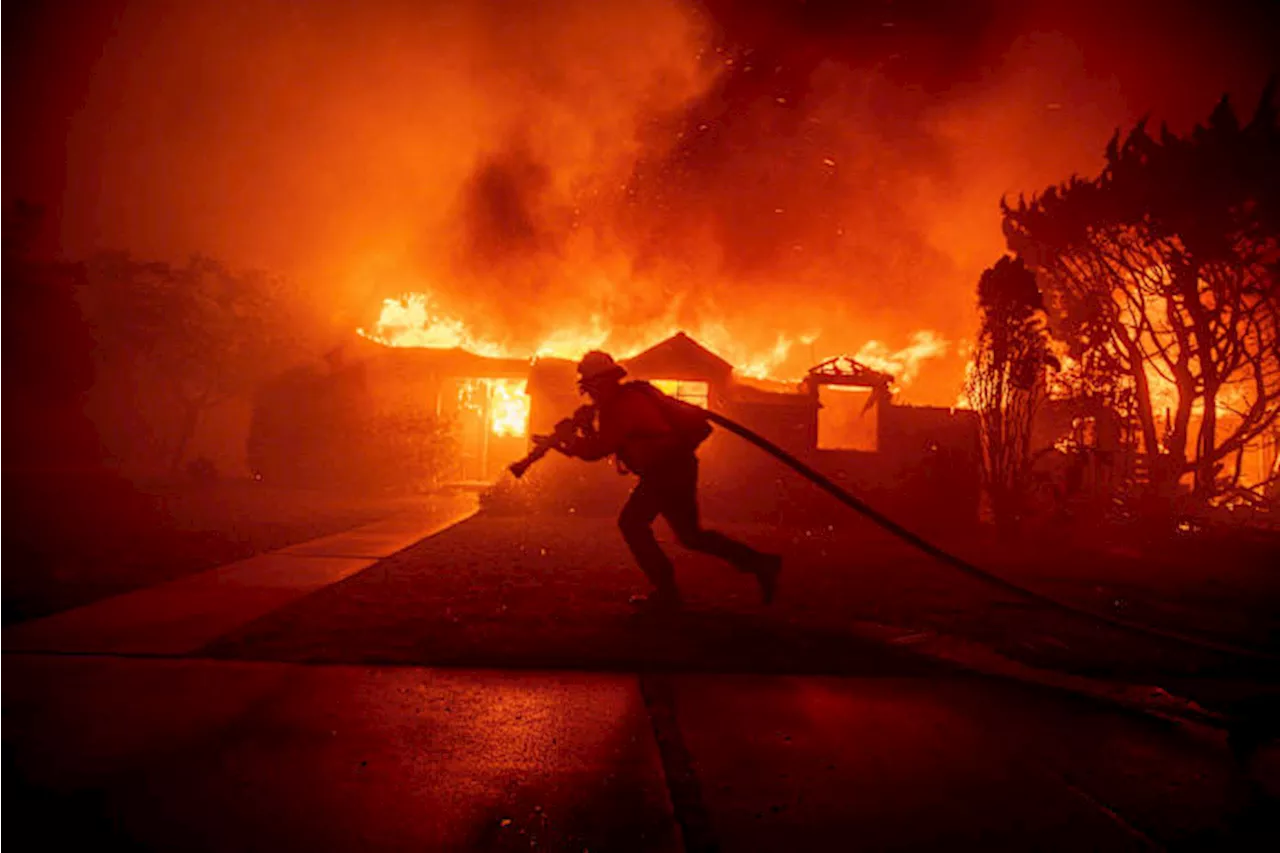 Wildfires Rage in Southern California Fueled by High WindsMultiple wildfires, including the Palisades Fire and the Eaton Fire, are burning in Southern California, fueled by strong winds gusting over 70 mph. The fires have caused evacuations and road closures, with firefighters facing challenges in battling the blazes due to the dangerous conditions.
Wildfires Rage in Southern California Fueled by High WindsMultiple wildfires, including the Palisades Fire and the Eaton Fire, are burning in Southern California, fueled by strong winds gusting over 70 mph. The fires have caused evacuations and road closures, with firefighters facing challenges in battling the blazes due to the dangerous conditions.
Read more »
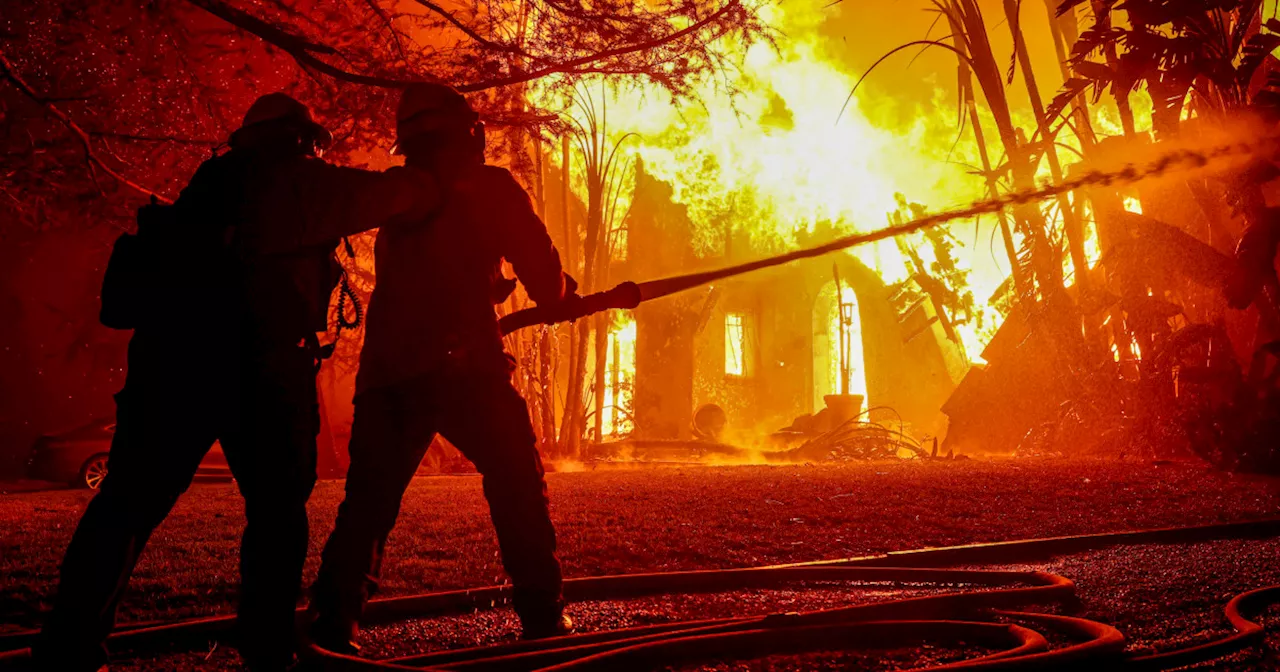 Wildfires Rage in Southern California, Displacing Thousands and Fueled by High WindsMultiple wildfires are burning across Southern California, fueled by strong winds. The largest, the Palisades Fire, has scorched over 15,800 acres and destroyed numerous homes. Other significant fires include the Eaton Fire (over 10,600 acres), the Hurst Fire (850 acres), and the Sunset Fire (50 acres). Firefighting efforts are hampered by low water pressure and out-of-service hydrants. The L.A. mayor's office is working to ensure the safety of homeless individuals, providing hotel vouchers and outreach services.
Wildfires Rage in Southern California, Displacing Thousands and Fueled by High WindsMultiple wildfires are burning across Southern California, fueled by strong winds. The largest, the Palisades Fire, has scorched over 15,800 acres and destroyed numerous homes. Other significant fires include the Eaton Fire (over 10,600 acres), the Hurst Fire (850 acres), and the Sunset Fire (50 acres). Firefighting efforts are hampered by low water pressure and out-of-service hydrants. The L.A. mayor's office is working to ensure the safety of homeless individuals, providing hotel vouchers and outreach services.
Read more »
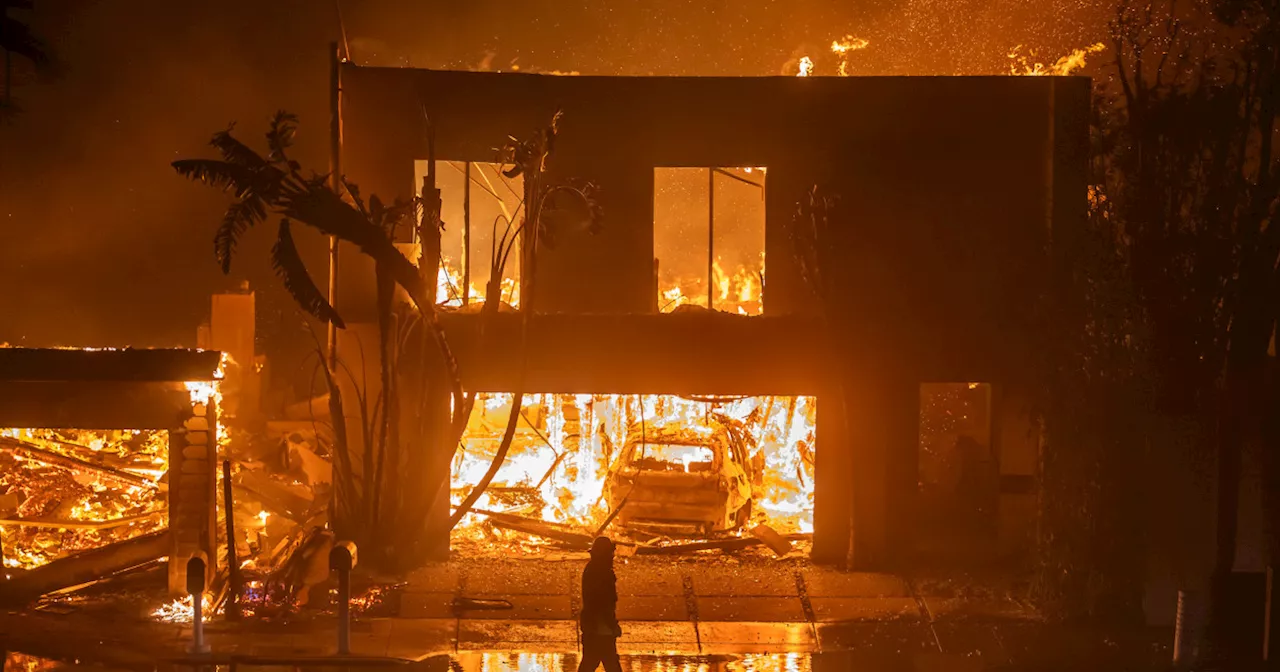 California Wildfires: A 'Perfect Storm' of Dry Conditions, High Winds, and DevelopmentThe recent devastating wildfires in Los Angeles are a tragic example of the increasing risks faced by communities in fire-prone areas. An NBC News review highlights the convergence of dangerous factors: prolonged drought, unusually powerful Santa Ana winds, and the encroachment of development into high-risk zones. The situation underscores the need for better planning, preparedness, and public awareness to mitigate the growing threat of wildfires.
California Wildfires: A 'Perfect Storm' of Dry Conditions, High Winds, and DevelopmentThe recent devastating wildfires in Los Angeles are a tragic example of the increasing risks faced by communities in fire-prone areas. An NBC News review highlights the convergence of dangerous factors: prolonged drought, unusually powerful Santa Ana winds, and the encroachment of development into high-risk zones. The situation underscores the need for better planning, preparedness, and public awareness to mitigate the growing threat of wildfires.
Read more »
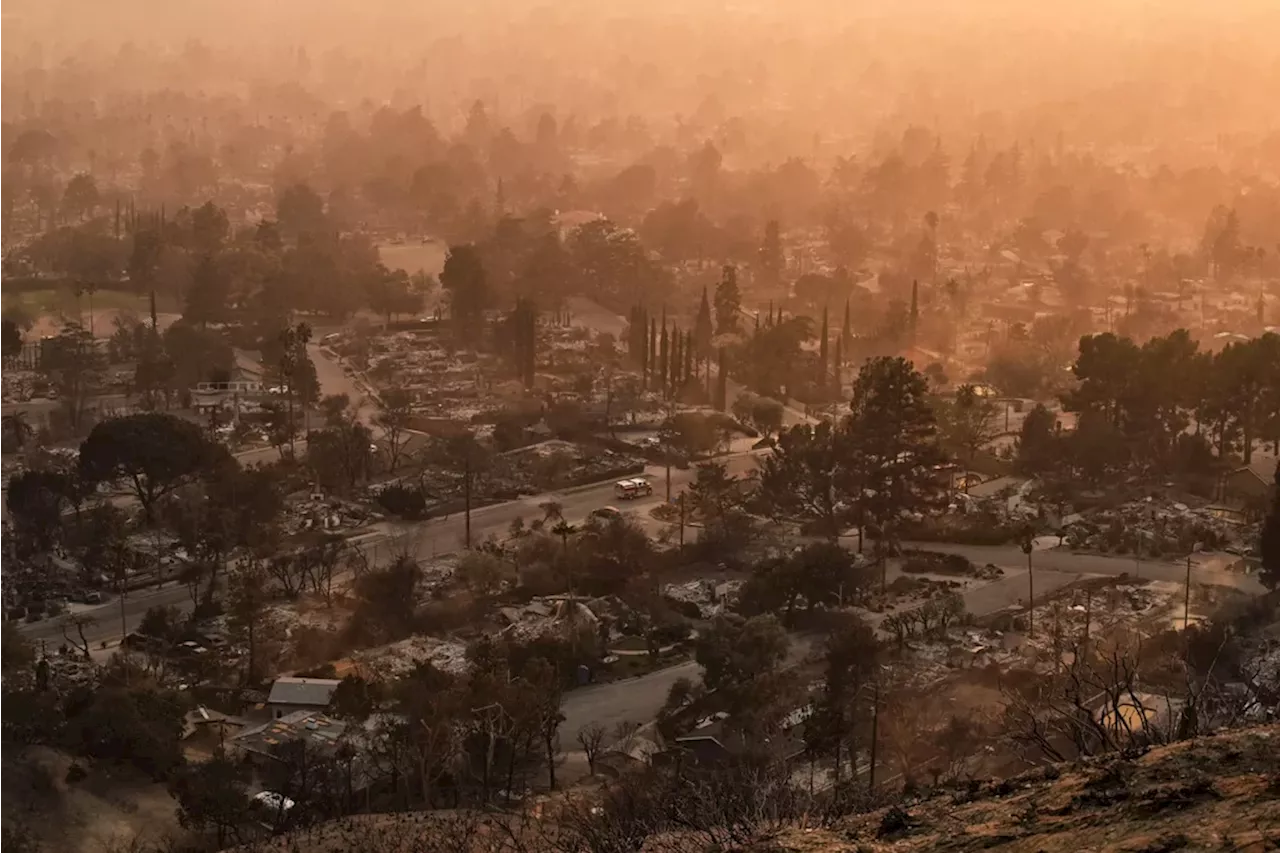 California Wildfires: Investigators Seek Cause Amid High WindsOfficials investigate the causes of the Eaton and Palisades wildfires in California, focusing on potential ignition sources like downed power lines, arson, or natural causes. The fires continue to burn with little containment, raising concerns about widespread damage and potential loss of life.
California Wildfires: Investigators Seek Cause Amid High WindsOfficials investigate the causes of the Eaton and Palisades wildfires in California, focusing on potential ignition sources like downed power lines, arson, or natural causes. The fires continue to burn with little containment, raising concerns about widespread damage and potential loss of life.
Read more »
